Peugeot 308 vs BYD Dolphin Surf – Differences & prices compared
Everyday use, family trips or long-distance drives – here’s where the differences show.
Discover whether Peugeot 308 or BYD Dolphin Surf fits your lifestyle better.
Costs and Efficiency: When it comes to price and running costs, the biggest differences usually appear. This is often where you see which car fits your budget better in the long run.
BYD Dolphin Surf has a significantly advantage in terms of price – it starts at 19700 £, while the Peugeot 308 costs 29200 £. That’s a price difference of around 9532 £.
In terms of energy consumption, the advantage goes to the Peugeot 308: with 15.20 kWh per 100 km, it’s minimal more efficient than the BYD Dolphin Surf with 15.50 kWh. That’s a difference of about 0.30 kWh.
As for range, the Peugeot 308 performs noticeable better – achieving up to 419 km, about 97 km more than the BYD Dolphin Surf.
Engine and Performance: Under the bonnet, it becomes clear which model is tuned for sportiness and which one takes the lead when you hit the accelerator.
When it comes to engine power, the Peugeot 308 has a a bit edge – offering 195 HP compared to 156 HP. That’s roughly 39 HP more horsepower.
In acceleration from 0 to 100 km/h, the Peugeot 308 is to a small extent quicker – completing the sprint in 7.60 s, while the BYD Dolphin Surf takes 9.10 s. That’s about 1.50 s faster.
In terms of top speed, the Peugeot 308 performs evident better – reaching 225 km/h, while the BYD Dolphin Surf tops out at 150 km/h. The difference is around 75 km/h.
There’s also a difference in torque: Peugeot 308 pulls distinct stronger with 300 Nm compared to 220 Nm. That’s about 80 Nm difference.
Space and Everyday Use: Cabin size, boot volume and payload all play a role in everyday practicality. Here, comfort and flexibility make the difference.
Seats: Peugeot 308 offers slightly more seating capacity – 5 vs 4.
In curb weight, BYD Dolphin Surf is slightly lighter – 1294 kg compared to 1436 kg. The difference is around 142 kg.
In terms of boot space, the Peugeot 308 offers noticeable more room – 412 L compared to 308 L. That’s a difference of about 104 L.
In maximum load capacity, the Peugeot 308 performs evident better – up to 1323 L, which is about 286 L more than the BYD Dolphin Surf.
When it comes to payload, Peugeot 308 distinct takes the win – 510 kg compared to 344 kg. That’s a difference of about 166 kg.
Who wins the race?
The Peugeot 308 proves to be leaves the rival little chance and therefore becomes our DriveDuel Champion!
Peugeot 308 is the better all-rounder in this comparison.

Peugeot 308
Peugeot 308
The Peugeot 308 presents a refined blend of style and sophistication, making it a compelling option for anyone in search of a dynamic yet practical vehicle. Its sleek design is complemented by a thoughtfully crafted interior that ensures both driver and passengers travel in comfort and elegance. Moreover, the 308 offers a responsive driving experience, combining agility with a sense of security on the road.
details @ media.stellantis.com
@ media.stellantis.com
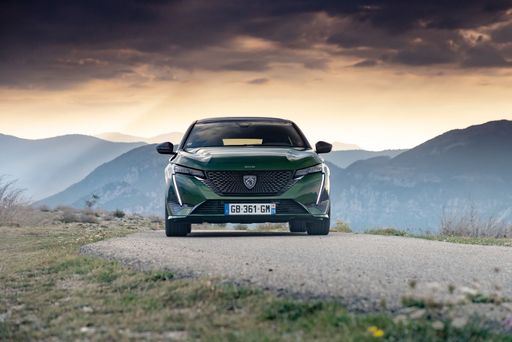 @ media.stellantis.com
@ media.stellantis.com
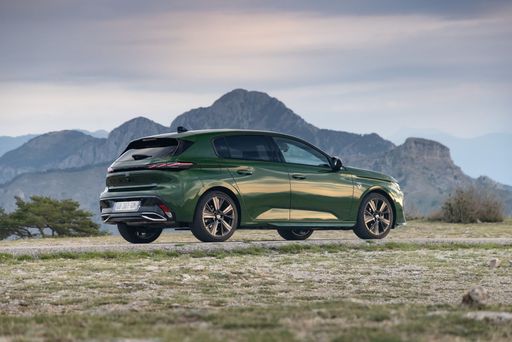 @ media.stellantis.com
@ media.stellantis.com
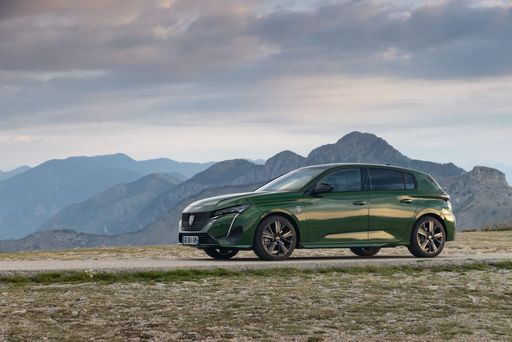 @ media.stellantis.com
@ media.stellantis.com
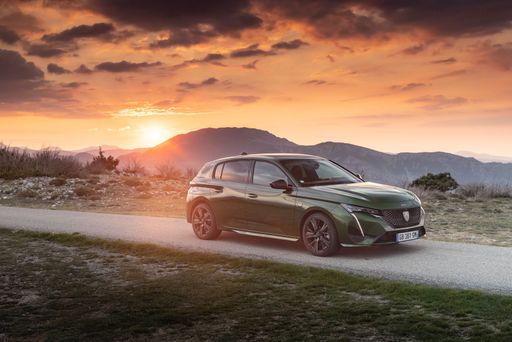 @ media.stellantis.com
@ media.stellantis.com
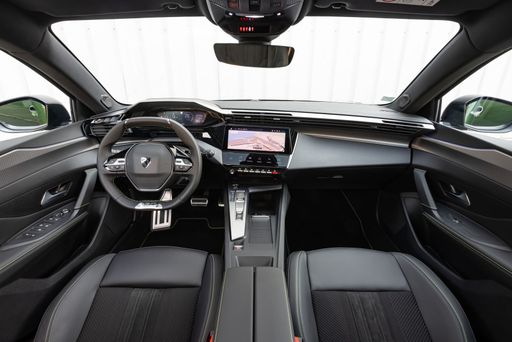 @ media.stellantis.com
@ media.stellantis.com
BYD Dolphin Surf
The BYD Dolphin Surf is an intriguing model that combines sleek design with modern electric technology, making it an appealing choice for urban commuters seeking sustainability and style. Its dynamic exterior design is complemented by an interior that prioritizes comfort and functionality, reflecting the brand's commitment to innovation. The model also offers impressive handling and a smooth driving experience, embodying the shift towards eco-friendly transportation.
details

|
|
|
|
|
Costs and Consumption |
|
|---|---|
|
Price
29200 - 41800 £
|
Price
19700 - 26600 £
|
|
Consumption L/100km
0.8 - 5.1 L
|
Consumption L/100km
-
|
|
Consumption kWh/100km
15.20 kWh
|
Consumption kWh/100km
15.5 - 16 kWh
|
|
Electric Range
78 - 419 km
|
Electric Range
220 - 322 km
|
|
Battery Capacity
51 kWh
|
Battery Capacity
-
|
|
co2
0 - 133 g/km
|
co2
0 g/km
|
|
Fuel tank capacity
42 - 53 L
|
Fuel tank capacity
-
|
Dimensions and Body |
|
|---|---|
|
Body Type
Hatchback
|
Body Type
Hatchback
|
|
Seats
5
|
Seats
4
|
|
Doors
5
|
Doors
5
|
|
Curb weight
1436 - 1759 kg
|
Curb weight
1294 - 1390 kg
|
|
Trunk capacity
314 - 412 L
|
Trunk capacity
308 L
|
|
Length
4367 mm
|
Length
3990 mm
|
|
Width
1852 mm
|
Width
1720 mm
|
|
Height
1441 mm
|
Height
1590 mm
|
|
Max trunk capacity
1258 - 1323 L
|
Max trunk capacity
1037 L
|
|
Payload
431 - 510 kg
|
Payload
344 kg
|
Engine and Performance |
|
|---|---|
|
Engine Type
Diesel, Electric, Petrol MHEV, Plugin Hybrid
|
Engine Type
Electric
|
|
Transmission
Automatic
|
Transmission
Automatic
|
|
Transmission Detail
Automatic Gearbox, Reduction Gearbox, Dual-Clutch Automatic
|
Transmission Detail
Reduction Gearbox
|
|
Drive Type
Front-Wheel Drive
|
Drive Type
Front-Wheel Drive
|
|
Power HP
130 - 195 HP
|
Power HP
88 - 156 HP
|
|
Acceleration 0-100km/h
7.6 - 10.6 s
|
Acceleration 0-100km/h
9.1 - 12.1 s
|
|
Max Speed
170 - 225 km/h
|
Max Speed
150 km/h
|
|
Torque
230 - 300 Nm
|
Torque
175 - 220 Nm
|
|
Number of Cylinders
3 - 4
|
Number of Cylinders
-
|
|
Power kW
96 - 144 kW
|
Power kW
65 - 115 kW
|
|
Engine capacity
1199 - 1598 cm3
|
Engine capacity
-
|
General |
|
|---|---|
|
Model Year
2023 - 2025
|
Model Year
2025
|
|
CO2 Efficiency Class
D, A, C, B
|
CO2 Efficiency Class
A
|
|
Brand
Peugeot
|
Brand
BYD
|
Is the Peugeot 308 offered with different drivetrains?
Available configurations include Front-Wheel Drive.
The prices and data displayed are estimates based on German list prices and may vary by country. This information is not legally binding.
